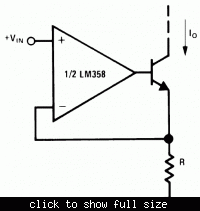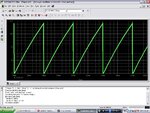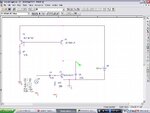Robert Hoffman
Newbie level 6

- Joined
- Jan 6, 2012
- Messages
- 14
- Helped
- 9
- Reputation
- 18
- Reaction score
- 9
- Trophy points
- 1,283
- Location
- Maryland, USA
- Activity points
- 1,472
Dear FvM
I designed this programmable current source ( for half cycle) . how can i use it as an integrator?
View attachment 66940
Regards
Goldsmith
Your circuit is a follower, not a current source. It won't do much of anything useful.
Start at the beginning. What do you actually want? The first step in any project is clearly defining your goals. That's a critical part of engineering. Sine only or sine/square/triangle? You want something that is somewhat round on top (5 or 10% distortion) or an actual sine wave? How much distortion? 1%, .01%, .0001% ? You appear to want an analog-only design, not digital or hybrid. And, you don't want to use an IC that already does this pretty well, like an XR2206. Why? What realistically do you need for total frequency range? How many ranges are acceptable within that total range. Voltage controlled or variable resistor/capacitor controlled or digital or frequency-controlled? What output voltage into what load resistance? How much variation in output versus frequency and load are acceptable? How much do you want it to cost? Ar you limiting the design to use parts you already have or or can you use a wider range of parts? Every choice you make can drive the design in a different direction.
If you have already decided you want a rough high-distortion sine-looking sort of wave with a diode wave shaper, it's best to start with a design that actually works. There was a design posted already for a triangle generator that was not too bad. A little old and complicated, but possible. Build it first and understand how it works. Modify it to suit your needs. If you want a cheaper simpler design, you can use a 555 timer with a current source and sink. There are circuits on the web. Look them up. Then make a diode wave shaper. Then make an output buffer. On the other hand, if you want something better then define your needs first. Building a lot of things and then trying to see if they fit your needs is a good way to build a lot of things and have nothing that is useful. Start at the beginning. End at the end. Starting in the middle is a good way to spend a lot of time on nothing. If your goal is simply to build and try examples of many different ways to solve the problem, make a list of the different basic approaches and research a circuit for each. Start with a published circuit that works. Understand why they made the choices they made and then try another. Only half the job of engineering is solving the problem. At least half the job is understanding the problem.






